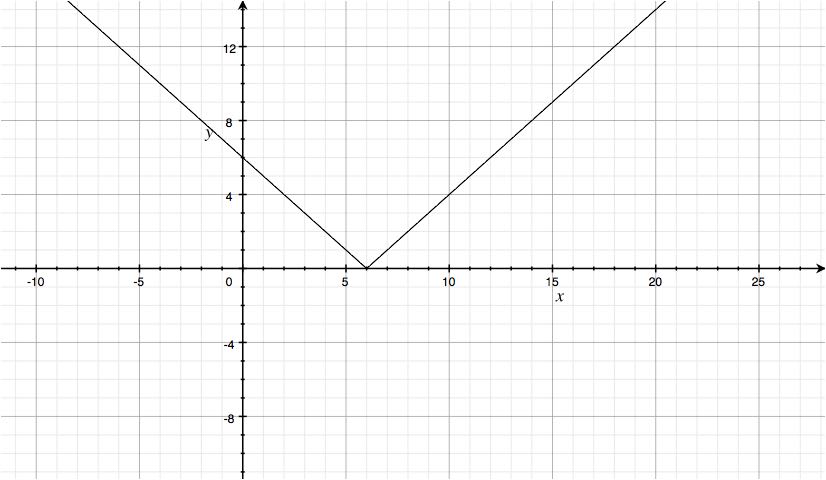How do you graph # f(x)= abs(x-6)#?
1 Answer
I like graphing using piece-wise functions.
Let's write two piecewise functions, one for the area of the function where
The function will change from a decrease to an increase at the vertex. When given an absolute value function of the form
Since
The next step is to determine the range. This will be determined by two elements:
a) The y-coordinate of the vertex
b) The direction of opening
In the function
Hence, the range of this function is
Now that we know the vertex, we can find another point on the graph and then find the equation of both piece-wise functions. I think it may be simplest to find the y-intercept of the function.
Hence, the y-intercept is at
We need to find the equation using point slope form now.
This is the left-hand side equation, since
As for the right-hand side piecewise equation, this can be obtained by multiplying the
In summary, our piecewise equations to graph are
You should have gotten a graph similar to the following.

Hopefully this helps!

